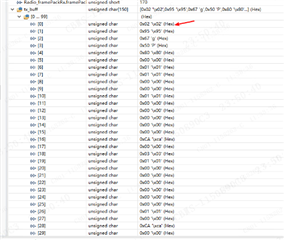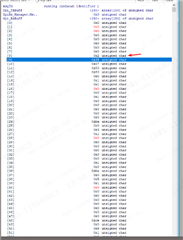Other Parts Discussed in Thread: CC2640,
When I configured the CC2642 as spi slave, in some case, I dont know how this happened.
I have a master chip (Infineon Tricore) communicate with CC2642 via spi, cc2642 work as slave mode. Sometimes, the master may get wrong data, for example, the slave send
{0x01, 0x02, 0x03, 0x04, 0x05, 0x06, 0x07, 0x08}
The master will get {0x04, 0x05, 0x06, 0x07, 0x08, 0x01, 0x02, 0x03}
Please see the following figure:
slave tx buffer:

master receive buffer:

and I have measured the MISO waveform with oscilloscope, it shows that the master received buffer is correct, same with the waveform. How this happen?


